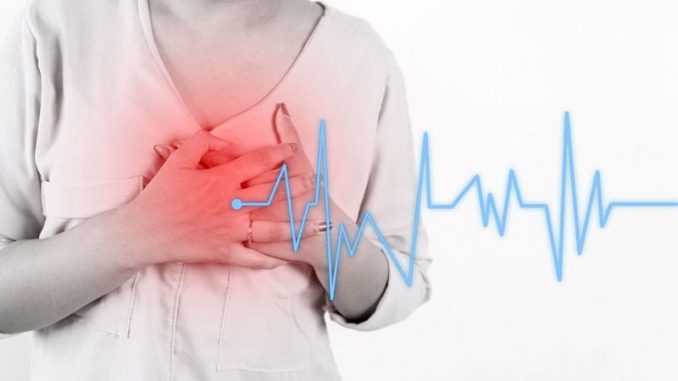
BARCELONA, Spain — Young women (under 50) are increasingly having heart attacks without doctors really knowing why. This is where the Young Women Presenting Acute Myocardial Infarction in France (WAMIF) study comes in, the results of which were presented in an e-poster at the European Society of Cardiology (ESC) Congress by Stéphane Manzo-Silberman, MD, Institute of Cardiology, Pitié-Salpétrière, Paris, France.[1] The results (yet to be published) fight several of the preconceived ideas on the topic, commented Manzo-Silberman in Medscape French Edition.
Significantly Higher Hospital Death Rates in Women
“Cardiovascular disease is the main cause of death in women, killing seven times more than breast cancer, notes Manzo-Silberman. The hospital death rate is significantly higher in women and, despite going down, is significantly higher than in men (more than double), particularly in women under 50. What’s more, in addition to the typical risk factors, women present specific risk factors related to hormone changes, high-risk inflammatory profiles, and thrombophilia.”
The WAMIF study was designed to determine the clinical, biological, and morphological features linked to hospital mortality after 12 months in women under 50. The prospective, observational study included all women in this age range from 30 sites in France between May 2017 and June 2019.
90% With Retrosternal Chest Pain
The age of the 314 women enrolled was 44.9 years on average. Nearly two thirds (192) presented with ST-segment elevation myocardial infarction and the other 122 without. In terms of symptoms, 91.6% of these women presented with typical chest pain, and 59.7% had related symptoms.
“With more than 90% having retrosternal pain, the idea that myocardial infarction presents with atypical symptoms in women has been widely challenged, despite the fact that more than half present with related symptoms and it isn’t known in which order these symptoms occur, Manzo-Silberman shared with Medscape. But what we can say is that if at any point a young woman mentions chest pain, even when occurring as part of several other symptoms, MI must be deemed a possibility until it has been ruled out.”
The risk profile revealed that 75.5% were smokers, 35% had a family history of heart disease, 33% had pregnancy complications, and 55% had recently experienced a stressful situation. The analysis also showed that cannabis use and oral contraception were primary risk factors in women younger than 35.
“With regard to risk factors, when designing this study, we expected that lots of these young women would have largely atypical autoimmune conditions, with high levels of inflammation. We looked for everything, but this was not actually the case. Instead, we found very many women to have classic risk factors; three quarters were smokers, a modifiable risk factor which can largely be prevented. The other aspect concerns contraception, and it’s why I insist that gynecologists must be involved insofar as they must inform their patients how to manage their risk factors and tweak their contraception.”
Coronary angiography findings showed that only 1% received a normal result, 29.3% had vessel damage, and 14.6% had aortic dissection. “We were surprised again here because we expected that with young women, we would see lots of heart attacks without obstruction, [in other words] normal coronary arteries, atypical forms of MI,” commented Manzo-Silberman. “In fact, most presented with atheroma, often obstructive lesions, or even triple vessel disease, in nearly a third of the cohort. So that’s another misconception dispelled — we can’t just think that because a woman is young, nothing will be found. Coronary catheterization should be considered, and the diagnostic process should be completed in full.”
After 1 year, there had been two cancer-related deaths and 25 patients had undergone several angioplasty procedures. Nevertheless, 90.4% had not experienced any type of CV event and 72% had not even had any symptoms.
“The final surprise was prognosis,” he said. “Previous studies, especially some authored by Viola Vaccarino, MD, PhD, showed an excess hospital rate in women and we had expected this to be the case here, but no hospital deaths were recorded. However, not far off 10% of women attended (at least once) the emergency department in the year following for recurrent chest pain which was not ischemic — ECG normal, troponin normal — so something was missing in their education as a patient.”
“So, there are improvements to be made in terms of secondary prevention, follow-up, and in the education of these young female patients who have experienced the major event that is a myocardial infarction,” concluded Manzo-Silberman.
This content was originally published on Medscape French edition.
Reference:
1. Manzo-Silberman S. Characteristics of young women presenting with acute myocardial infarction: the prospective, multicentre, observational WAMIF study; e-poster, ESC 2022.
For more from theheart.org | Medscape Cardiology, join us on Twitter and Facebook
Source: Read Full Article